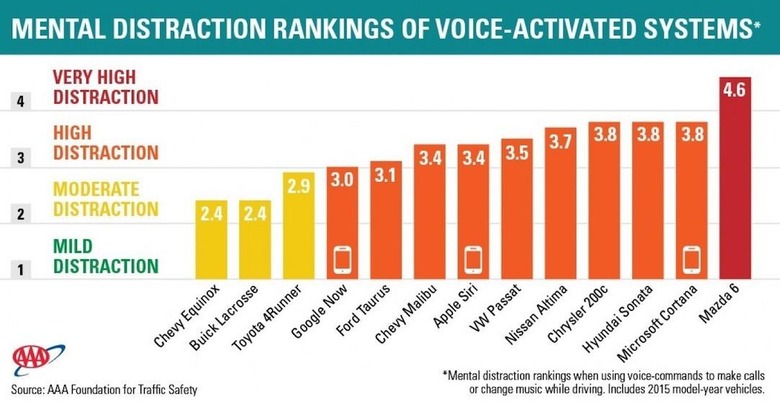AAA Study Finds Hands-Free Smartphone Features Still Distract Drivers
Google, Apple, and Microsoft have worked hard to implement hands-free features when it comes to safely using their smartphones while behind the wheel, allowing drivers to keep their eyes on the road. While these settings are certainly better than physically holding and interacting with a phone while driving, it turns out they're not quite as safe as we all thought. A new study from the University of Utah and AAA (American Automobile Association) has found that voice commands can still be very distracting.
The study found that driving and talking, whether it's on a phone call or giving voice commands, still takes a good amount of mental effort. So much, that it can take 27 seconds beyond a voice-based task for drivers' brains to regain focus on the road. Even when it's something as simple as saying what song to play.
This was determined when researchers looked into the infotainment systems from a handful of cars released in the last year, along with the three main virtual smartphone assistants: Google Now, Siri, and Cortana.

When it came to the cars, the Chevy Equinox and Buick Lacrosse were tied for the least distracting systems, while the Mazda 6 was the worst. As for the voice assistants, Cortana ranked the most poorly, Siri was in the middle of the pack, and Google Now was a bit better.
An assistant professor of psychology from the University of Utah commented that while voice-based systems are claimed to be much safer, they "simply don't work well enough." The study recommended that drivers should avoid trying to using this technology while behind the wheel, and that the safest option is to do nothing more than things like listen to the radio or an audiobook.
SOURCE: AAA, University of Utah
